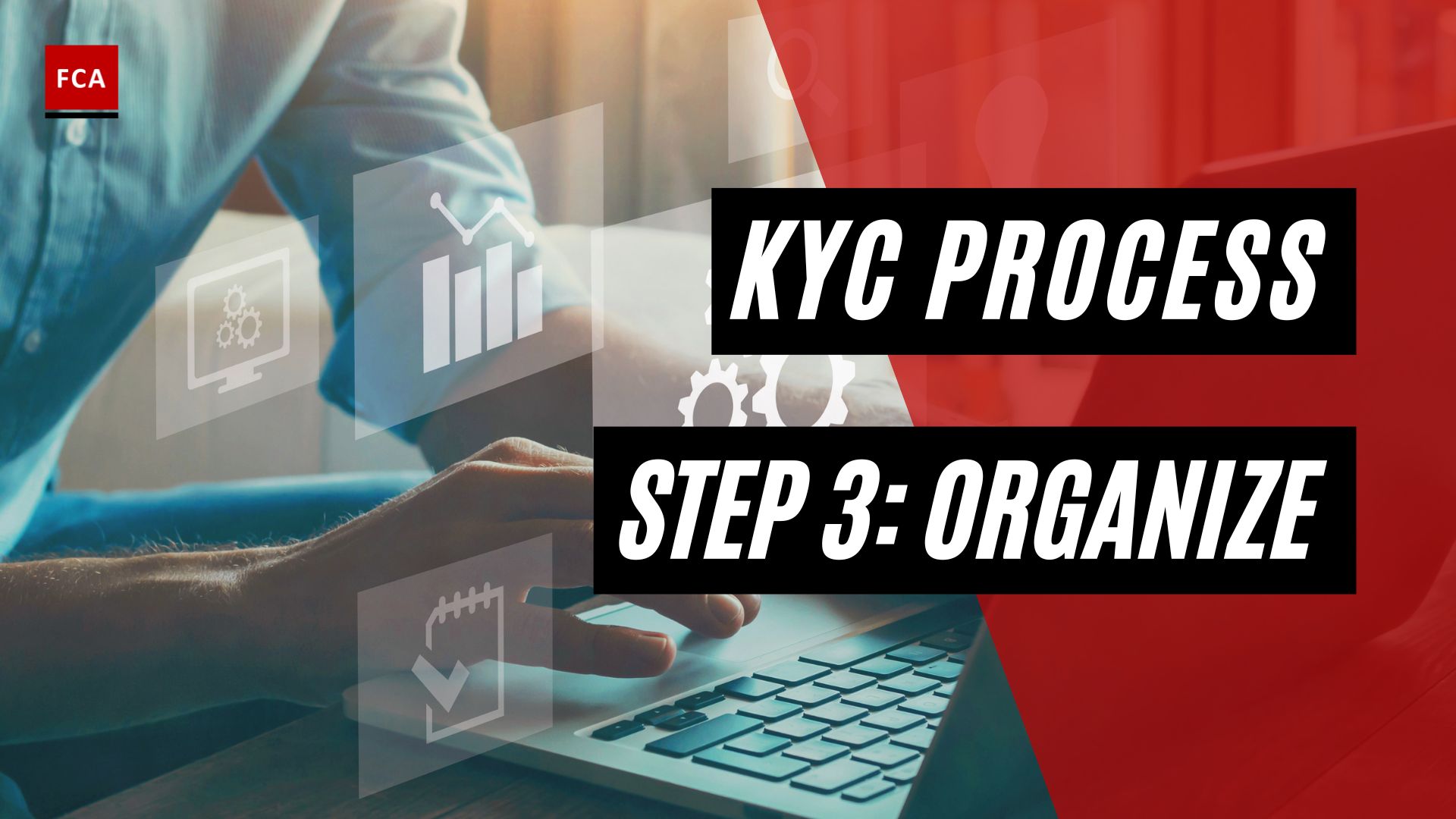AML Software Solutions: Enhancing Compliance Efforts
In the world of banking, Anti-Money Laundering (AML) software plays a crucial role in enhancing compliance efforts and mitigating the risks associated with financial crimes. Banks are required to implement robust AML measures to prevent money laundering, terrorist financing, and other illicit activities. Let’s explore the importance of AML software for banks, the advantages it offers, and the key features that make it an essential tool in the fight against financial crimes.
The Importance of AML Software for Banks
AML software is of paramount importance for banks in ensuring regulatory compliance and safeguarding against illicit activities. By leveraging the capabilities of AML software, banks can effectively manage risk by identifying patterns of behavior, recognizing money laundering schemes, and flagging unusual transactions for further investigation. It acts as a proactive defense mechanism, enabling banks to stay ahead of potential threats and meet their compliance obligations.
Advantages of Using AML Software
The advantages of using AML software for banks are significant. Implementing AML software allows banks to automate regulatory compliance processes, reducing manual errors and enhancing overall operational efficiency in monitoring transactions for potential money laundering activities (Fraud.net). The software provides advanced capabilities such as transaction monitoring, customer due diligence, risk assessment, and suspicious activity reporting, ensuring that regulatory requirements are met (Fraud.net). By utilizing AML software, banks can streamline their processes, improve accuracy, and allocate resources more effectively.
Key Features of AML Software
AML software offers a range of key features that are critical for effective compliance efforts. These features enable banks to detect and deter illicit activities, ensuring the integrity of their operations. Some of the key features of AML software include:
-
Transaction Monitoring: AML software monitors customer transactions in real-time, analyzing them for suspicious patterns or unusual behavior. This allows banks to identify potentially illicit activities promptly.
-
Customer Due Diligence (CDD): AML software facilitates comprehensive and efficient customer due diligence, enabling banks to verify the identity of their customers, assess their risk profiles, and ensure compliance with Know Your Customer (KYC) regulations.
-
Risk Assessment: AML software provides tools for assessing and assigning risk ratings to customers, accounts, and transactions. This helps banks prioritize their compliance efforts and allocate resources effectively.
-
Suspicious Activity Reporting: AML software enables banks to generate and submit Suspicious Activity Reports (SARs) to regulatory authorities when suspicious transactions or behaviors are detected. This allows for timely reporting and investigation of potential financial crimes.
-
Advanced Analytics: AML software leverages advanced analytics capabilities, such as artificial intelligence (AI) and machine learning, to enhance the detection of suspicious activities and reduce false positives. This improves the efficiency and effectiveness of the compliance process.
-
Compliance Workflow: AML software provides a streamlined workflow engine that allows banks to design and adjust customer-facing processes, ensuring regulatory compliance and effective AML measures. This helps banks stay up to date with regulatory changes and adapt their compliance processes accordingly.
By harnessing the power of AML software and its key features, banks can strengthen their compliance efforts, detect financial crimes more effectively, and protect themselves from regulatory penalties and reputational damage.
In the next section, we will explore the top AML software providers for banks, offering insights into the leading solutions available in the market to further enhance compliance efforts.
Top AML Software Providers for Banks
When it comes to combating financial crimes and ensuring regulatory compliance, banks rely on robust AML (Anti-Money Laundering) software solutions. Several reputable providers offer AML software tailored to meet the specific needs of financial institutions. Let’s explore some of the top AML software providers for banks.
ComplyAdvantage
ComplyAdvantage is a leading provider of AI-driven fraud and AML risk detection solutions. Their software utilizes advanced data scanning techniques such as graph network detection, identity clustering, and dynamic thresholds. By leveraging artificial intelligence, ComplyAdvantage reduces false positives by up to 70 percent and shortens onboarding cycle times by up to 50 percent. Their innovative approach enhances compliance workloads and helps banks stay ahead in the fight against financial crimes.
LexisNexis Risk Solutions
With a strong global presence, LexisNexis Risk Solutions is a trusted provider of legal, regulatory, and business information and analytics. Their AML software solution caters to customers that include seven of the world’s top ten banks. By leveraging their extensive data resources and advanced technology, LexisNexis Risk Solutions helps banks effectively manage regulatory and reputational risks.
Dow Jones Risk and Compliance
Dow Jones Risk and Compliance offers comprehensive risk management data and integrated technology solutions. Their AML software assists banks in mitigating regulatory and reputational risks. With a diverse clientele that includes institutions like Hobson Prior and ICBC, Dow Jones Risk and Compliance provides banks with the tools they need to stay compliant and protect their reputation.
LSEG Data and Analytics (formerly Refinitiv)
LSEG Data and Analytics (formerly Refinitiv) is a leading provider of financial markets infrastructure. They offer a wide range of financial data, analytics, and news. Their AML software solutions are trusted by major banks such as Deutsche Bank and JPMorgan Chase. LSEG Data and Analytics help banks effectively manage AML compliance, enabling them to navigate the complexities of financial regulations.
Oracle
Renowned for its integrated cloud application and platform services, Oracle also provides AML software features utilized by banks worldwide. Institutions like Credit Agricole and Aman Bank rely on Oracle’s AML software to enhance their compliance efforts. Oracle’s comprehensive suite of AML solutions helps banks detect and prevent financial crimes, ensuring regulatory compliance.
These top AML software providers for banks offer powerful tools and technologies to assist financial institutions in their fight against money laundering and other financial crimes. By leveraging the capabilities of these software solutions, banks can enhance their compliance efforts, mitigate risks, and foster a safer financial ecosystem.
Trends and Challenges in AML Compliance
As the landscape of anti-money laundering (AML) compliance continues to evolve, financial institutions face several trends and challenges in their efforts to combat money laundering and financial crimes. These include the adoption of technology-driven solutions, evolving money laundering techniques, cross-border compliance challenges, and a shortage of skilled AML professionals.
Technology-Driven Solutions
In response to the rapidly changing nature of financial crimes, financial institutions are increasingly turning to technology-driven solutions to enhance their AML strategies. The use of technologies such as Artificial Intelligence (AI) and Machine Learning (ML) enables institutions to process large amounts of data rapidly and improve the detection of suspicious activities, while reducing false positives (FlagRight). Tech-driven AML compliance includes trends such as the use of API-first solutions for real-time monitoring and detection, RegTech leveraging advanced analytics and big data for regulatory compliance, and the repurposing of blockchain technology to create traceable audit trails for effective transaction monitoring (FlagRight).
Evolving Money Laundering Techniques
Criminals continuously find new ways to launder money, presenting challenges for financial institutions in preventing and detecting money laundering activities. Techniques such as the use of shell companies, offshore accounts, and digital currencies to conceal the origin of funds pose significant challenges. Additionally, criminals may employ complex transactions like layering and integration to evade detection, further complicating AML compliance efforts (Sanction Scanner).
Cross-Border Compliance Challenges
For banks and financial institutions operating across multiple jurisdictions, managing cross-border AML compliance standards can be complex and resource-intensive. Compliance with different AML regulations across various jurisdictions requires institutions to gather extensive customer information, transaction details, and beneficial ownership data while ensuring regulatory compliance. Overcoming these challenges necessitates a comprehensive understanding of global AML requirements and robust compliance frameworks (Sanction Scanner).
Shortage of Skilled AML Professionals
The shortage of skilled personnel with expertise in AML poses a significant challenge for financial institutions. The high demand for qualified AML professionals, coupled with a lack of available candidates, onboarding expenses, and high turnover rates, makes it difficult for organizations to build and maintain robust AML teams. To address this challenge, financial institutions must invest in recruitment, training, and retention strategies to ensure compliance with evolving regulatory obligations (Sanction Scanner).
By staying abreast of these trends and addressing the associated challenges, banks and financial institutions can strengthen their AML compliance efforts and effectively combat money laundering activities. The adoption of technology-driven solutions, continuous monitoring of evolving money laundering techniques, cross-border compliance management, and investment in skilled AML professionals are crucial in maintaining effective AML compliance programs.
Evaluating AML Software for Banks
When selecting AML software for banks, it is essential to thoroughly evaluate the available options to ensure they meet the specific needs of the institution. Several factors should be considered during the evaluation process, including advanced capabilities, scalability and integration, and training and maintenance.
Factors to Consider
When evaluating AML software for banks, several critical factors should be taken into account. These factors include:
-
Regulatory Compliance: The chosen software should align with regulatory requirements and industry best practices, enabling banks to effectively meet their anti-money laundering (AML) obligations. It should provide features such as real-time monitoring, automated transaction screening, case management tools, customer risk profiling, suspicious activity reporting, and comprehensive audit trails.
-
Big Data Handling: AML software should have the capability to handle large volumes of data efficiently. As financial transactions continue to increase in complexity and volume, the software should be able to process and analyze vast amounts of information in real-time, ensuring swift and accurate detection of suspicious activities.
-
Flexibility and Adaptability: The software should be adaptable to changing regulatory requirements and capable of accommodating future updates. It should provide a user-friendly interface that allows for easy configuration and customization, enabling banks to tailor the system to their specific needs.
-
Integration Capabilities: Seamless integration with existing systems is crucial to ensure data accuracy and reduce operational disruptions. The software should be compatible with various data sources and have the ability to integrate with other internal and external systems, such as transaction monitoring systems and customer relationship management platforms.
-
Reliability: The software should provide reliable and accurate results, minimizing false alerts while effectively detecting potential money laundering activities. It should have a proven track record and be backed by strong customer references.
Advanced Capabilities
Advanced capabilities are crucial for effective AML software. The software should incorporate artificial intelligence (AI) and machine learning capabilities to enhance transaction monitoring, customer due diligence, and risk assessment procedures. By leveraging AI and machine learning, the software can improve the detection of suspicious activities, reduce false positives, and adapt to evolving money laundering techniques (Finscan).
Additionally, the software should offer advanced identity verification tools to combat fraud within the banking sector. These tools help ensure that customer information is accurately collected and verified, enhancing the overall efficiency and effectiveness of the AML compliance process (Lightico).
Scalability and Integration
Scalability is a critical consideration when selecting AML software for banks. As transaction volumes increase, the software should be able to handle the growing demands without compromising performance or accuracy. It should be capable of efficiently processing large volumes of data while maintaining real-time monitoring capabilities.
Integration capabilities are equally important. The software should seamlessly integrate with existing systems and data sources, such as transaction monitoring systems and customer databases. This integration ensures data accuracy, reduces duplication of effort, and enhances operational efficiency.
Training and Maintenance
Successful implementation and utilization of AML software require comprehensive training programs for staff. The software provider should offer training sessions that cover system functionalities, reporting capabilities, and best practices for using the software effectively. Ongoing system maintenance and updates are also essential to ensure the software remains up-to-date with regulatory changes and industry standards.
Regular testing of the software’s effectiveness is crucial to identify any potential issues or gaps in the system. Continuous evaluation and monitoring of the software’s performance help banks stay ahead of emerging risks and optimize their AML compliance efforts.
By carefully evaluating AML software solutions based on factors such as advanced capabilities, scalability and integration, and training and maintenance, banks can select the most suitable software to enhance their AML compliance efforts. It is important to choose a solution that not only meets current needs but also provides room for future growth and regulatory changes.
Realizing the Benefits of AML Software
AML software plays a crucial role in the banking industry by enabling financial institutions to effectively comply with Anti-Money Laundering (AML) regulations and prevent financial crimes like money laundering and terrorist financing. The use of AML software brings several key benefits to banks, including the prevention of financial crimes, enhancement of operational efficiency, and maintenance of regulatory compliance.
Preventing Financial Crimes
One of the primary benefits of implementing AML software is the ability to prevent financial crimes. AML software helps banks manage risk effectively by identifying patterns of behavior, recognizing money laundering schemes, and flagging unusual transactions that require further investigation. By monitoring customer transactions and activities, AML software can identify suspicious behavior and potential money laundering activities. This proactive approach enables banks to take appropriate action to prevent financial crimes and protect their customers and the financial system at large.
Enhancing Operational Efficiency
Another significant benefit of using AML software is the enhancement of operational efficiency within banks. AML software automates regulatory compliance processes, reducing the need for manual intervention and minimizing the risk of errors (Fraud.net). Manual processes can be time-consuming and prone to human errors, whereas AML software streamlines and automates various tasks such as transaction monitoring, customer due diligence, risk assessment, and suspicious activity reporting (Fraud.net). This automation not only saves time but also improves the accuracy and consistency of compliance efforts, allowing banks to allocate resources more efficiently and focus on other critical aspects of their operations.
Maintaining Regulatory Compliance
Maintaining regulatory compliance is a fundamental requirement for banks, and AML software plays a vital role in achieving this objective. AML software provides banks with advanced capabilities to ensure compliance with AML regulations. These capabilities include transaction monitoring, customer due diligence, risk assessment, and suspicious activity reporting (Fraud.net). By leveraging the features offered by AML software, banks can meet their regulatory obligations effectively and efficiently. This not only helps protect the integrity of the financial system but also safeguards the reputation of the bank and its stakeholders.
In summary, AML software solutions offer significant benefits to banks in their fight against financial crimes. By preventing financial crimes, enhancing operational efficiency, and maintaining regulatory compliance, AML software enables banks to protect themselves, their customers, and the global financial system. The utilization of advanced technologies, such as artificial intelligence and machine learning, further enhances the effectiveness of AML software in detecting suspicious activities and reducing false positives. By investing in robust AML software solutions, banks can effectively mitigate the risks associated with money laundering and maintain a strong stance against financial crimes.
The Consequences of Non-Compliance
Ensuring compliance with Anti-Money Laundering (AML) regulations is of utmost importance for banks and financial institutions. Failure to comply can have severe consequences, including regulatory fines, reputational damage, and legal liabilities.
Regulatory Fines
Regulators have increasingly imposed significant fines on financial institutions that fail to comply with AML regulations. In recent years, these fines have amounted to billions of dollars globally. For example, in 2023 alone, global fines related to AML non-compliance exceeded $8 billion, with the highest fines being issued in the U.S. and APAC regions (NorthRow). The U.S. alone issued over $1 billion in AML fines during the first half of 2023, highlighting the growing regulatory pressures on financial institutions in the country (NorthRow). Similarly, European financial institutions, especially those in the UK, faced substantial AML fines in 2023, with fines exceeding $800 million (NorthRow).
Reputational Damage
Non-compliance with AML regulations can lead to significant reputational damage for banks and financial institutions. The public and stakeholders expect financial institutions to maintain high standards of integrity and compliance. Instances of non-compliance can erode trust, resulting in a loss of customers, investors, and business partners. Rebuilding a damaged reputation can be a challenging and time-consuming process, making it crucial for institutions to prioritize AML compliance and utilize AML software solutions to mitigate risks.
Legal Liabilities
Financial institutions that fail to comply with AML regulations may face legal liabilities, including potential criminal charges for individuals within the organization. In some cases, non-compliance can result in civil penalties or legal actions brought by affected parties. The legal consequences can extend beyond fines, potentially impacting the personal and professional lives of individuals involved in AML non-compliance.
To avoid these consequences, financial institutions must prioritize AML compliance and leverage AML software solutions to enhance their compliance efforts. These solutions provide advanced capabilities for AML monitoring, AML screening, and AML reporting, enabling institutions to proactively detect and prevent financial crimes. By maintaining regulatory compliance, financial institutions can protect their reputation, avoid legal liabilities, and safeguard the integrity of the global financial system.
The Future of AML Software
As the landscape of financial crime threats continues to evolve, the future of AML software holds significant promise in enhancing compliance efforts for banks. In this section, we will explore three key areas that are driving the future of AML software: AI and machine learning advancements, remote transactions and the pandemic impact, and identity verification and risk mitigation.
AI and Machine Learning Advancements
AI and machine learning technologies are revolutionizing the field of AML software. These advancements enable software solutions to analyze vast amounts of data, identify patterns, and detect suspicious activities with greater accuracy and efficiency. By leveraging AI and machine learning, AML software can continuously learn from new data and adapt to evolving money laundering techniques, providing banks with more robust protection against financial crimes.
The integration of AI-powered algorithms allows AML software to automate time-consuming tasks such as transaction monitoring, customer due diligence, and screening against sanction lists. This not only increases operational efficiency but also improves the effectiveness of AML compliance by reducing false positives and false negatives. Banks can stay one step ahead of money launderers by harnessing the power of AI and machine learning in their AML software solutions.
Remote Transactions and Pandemic Impact
The COVID-19 pandemic has accelerated the adoption of remote transactions, leading to an increased reliance on digital channels for financial activities. As banks navigate this new landscape, AML software must adapt to the changing dynamics. AML software solutions are now equipped to monitor and analyze digital transactions, detect suspicious patterns, and identify potential money laundering activities in real-time.
With the rise of remote transactions, AML software also plays a crucial role in addressing the challenges that come with it. It enables banks to verify customer identities remotely, conduct enhanced due diligence checks, and ensure compliance with regulatory requirements. By leveraging AML software tailored for remote transactions, banks can mitigate the risks associated with digital channels and maintain robust AML compliance standards.
Identity Verification and Risk Mitigation
Identity verification is a critical component of AML compliance. AML software solutions are incorporating advanced identity verification capabilities to enhance risk mitigation strategies for banks. These solutions can verify identities across multiple countries and regions, validate various types of identification documents, and conduct comprehensive background checks on individuals and businesses.
By integrating with reliable data sources and leveraging technologies such as 2FA, NFC chips, and mobile driver’s licenses (mDLs), AML software ensures secure and accurate identity verification. Banks can screen customers against global sanction lists, politically exposed person (PEP) lists, and negative news databases to identify potential risks and prevent fraudulent activities effectively. AML software solutions also empower banks to stay updated with the latest information by conducting automated negative news checks across millions of articles.
The future of AML software holds immense potential for banks to strengthen their compliance efforts. By harnessing AI and machine learning advancements, adapting to remote transactions, and incorporating advanced identity verification capabilities, AML software is poised to revolutionize the fight against financial crimes. As regulatory requirements evolve and criminals become more sophisticated, banks can rely on cutting-edge AML software solutions to maintain a robust defense against money laundering and ensure a safer financial ecosystem.








